SEO
5 Ways You Can Really Steal Organic Clicks from Industry Giants
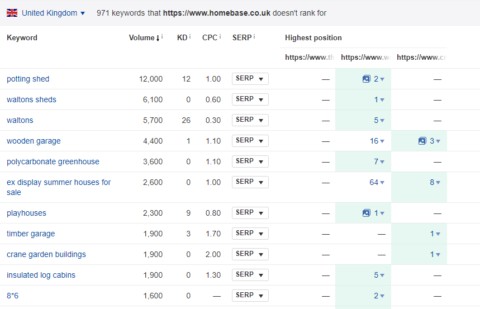
The giants of fairy-tales have three things going for them: strength, resources, and infamy.
In a similar way, our industry giants often dominate the searches due to the strength of their team, the resources of a large budget, and their brand fame.
A household name, a large team of experts, and a budget to rival the plunder of a fantasy kingdom, isn’t a luxury we all have as search marketers.
So how do you stand out from the crowd in a marketplace dominated by industry giants with resources out of your reach?
We are going to explore ways to win organic clicks and conversions away from the big, established players in your space while working with budgets a fraction of theirs.
In just five steps, I’m going to show you how you can prepare your website to bring down the giants.
1. Look for Their Weaknesses
The first step in competing against the dominant brands is assessing where they have weaknesses.
Content Gap Analysis
Start with a content audit. Using a tool like Ahrefs, you get an understanding of what keywords you are ranking for, which they are not.
In Ahrefs you can enter your domain and a couple of the sites of competitors who are also in the top 5 organic search results into the “Content Gap” feature and compare it with the number one player in your industry.
This will show you which keywords you and your competitors are ranking for which the giant is not. This gives you an idea of where your competitive edge is.
For example, I have chosen the industry “wooden sheds” and entered two websites and the brand I am keen on improving.
If the giant I’m wishing to take down is Homebase, a large home improvement and gardening store here in the UK, then I can see that the keywords they are not ranking for, but some or all of the smaller brands are.
This gives me an idea that I can compete more easily for terms such as “potting shed” and “playhouses”, both with a high monthly search volume but not something the giant is currently targeting.

Screenshot from Ahrefs’ “Content Gap” report
Content Format Gaps
The other aspect you should be looking at in your content gap analysis is the formats of content that are not being utilized by your heavyweight competitor.
Whatever your industry there is always the scope to go outside of the standard “text on a page” template for your site.
Diagrams, videos, and audio files all increase the ways your website can be found through search. You can easily use a crawler to search the code of a site for the indicators that it is using formats such as PDFs and even videos.
For more detail on how to use a web crawler and custom extraction to identify types of content on a page, such as YouTube iframes, take a look at Screaming Frog’s guide to web scraping and data extraction.
Once you have an idea of what content your competitors are not using you can start to take advantage of that gap.
For instance, producing video guides to explain how to set up the technical products you are both selling, or the audio explanation of complicated medical topics could give you that edge in usability and conversion.
Make a Display of Strength
Improving how your content is displayed in the search results can be an easy shot to take against a behemoth competitor.
Oftentimes, due to the sheer volume of products or pages on a site, they rely on templated page titles and descriptions rather than having the time or facility to craft them all by hand. Use that to your advantage.
Writing a compelling meta description to encourage click-through might seem like a fundamental of SEO.
Up against the likes of Amazon, however, whose inventory is in the millions, it can cause you to get the click even if you aren’t out-ranking them.
Mark up Your Unique Content
The best way to maximize the effectiveness of the content types you are utilizing that your competitors aren’t, is by using schema markup.
This will enable some search engines to pull through this information and display it in the SERPs in a more appealing way than a standard search result.
For example, if you choose to use videos on your site you can mark them up in such a way that Google can use them to populate the video carousel, a spot in the SERPs that is reserved purely for videos.
Even if your giant has great written copy that answers a user’s question it will not be able to outrank the video you created that visually answers their query.
Aim for Featured Snippets
The holy grail of search results, the featured snippet, evens the playing field when it comes to search rankings.
No matter if your site is not ranking in first position for a search query, you are still eligible to appear in the “position 0” placement if your content best answers the user’s search.
Studying the search results related to your industry can allow you to see when featured snippets are appearing and what is the content currently populating this area.
Google’s John Mueller has shared some details on how to rank for featured snippets.
Use Your Other Resources
If you are lucky enough to have access to paid search accounts for your brand then make sure you are using the data gathered from them. Analyze the converting terms that are relevant to the campaign you are running.
Larger brands may well find their teams working in silos, or even outsourcing elements of their campaigns to different agencies which means the cross-channel insight is harder to come by. Use this to your advantage.
2. Be Quick & Nimble
Juggernauts are intimidating, but they are also slow. The benefit of a small company or agency is the speed in which you can pivot.
If a campaign is not effective, getting sign-off to learn from it and try something new is not as much of a bureaucracy-laced endeavor as with a large brand.
Quick to React to New Opportunities
Many enterprise businesses have several layers of authorization required to make the smallest change.
Being able to adapt quickly to a change in the market or capitalize on a new audience gives your SEO team the edge.
Keeping an eye on what is performing well on social media can help you to ride the wave of an emerging trend.
This kind of adaptation is often out of reach for larger brands who are beholden to strict marketing and content plans that cannot be deviated from easily.
Through your understanding of market trends and the ability to move swiftly, you can create content for digital PR purposes a lot quicker than a team that is on a strict content plan.
Make Changes Swiftly
An extensive development queue is frequently a barrier to getting changes implemented to a website quickly.
Often, there are other priority tasks your in-house or agency developers are focusing their time on. Multiply this delay by ten for an enterprise site.
Being able to talk to your developers and ask them about priorities is a huge benefit that comes from working in a smaller company.
You may still be outsourcing your development work, but chances are you have a direct dial to a member of their development team or your account manager rather than having to submit a request and escalate it through slower, more official channels.
Make sure you take advantage of this closer working relationship by:
- Discussing your needs with your development team.
- Educating them on the importance of SEO, if it’s an area they are not familiar with.
3. Identify Your Secret Weapon
Your secret weapon against strong competitors is likely going to come out of your ability to focus your time and efforts where they cannot.
Stay Local
In some instances, this could be within a local community.
If your business serves people from a physical location, you are far better placed to rank for queries with a local intent than a purely ecommerce site.
If your large competitors also have brick-and-mortar stores but not in a location near yours, then your niche will be your local area.
Your small business that is in the heart of a community will be able to gain relevant local links from charities, sports clubs and community events in that area far easier than a large multinational corporation.
If you have a handful of shops across a small area, you are more likely to be able to spend time building relationships with local contacts than a centralized SEO team for a company that has hundreds of locations to cover.
Highlight Skills & Expertise
Another great way of differentiating your client or your company from larger competitors is by using its staff to build authority for your site.
The chances of the CEO of a company that has 100 employees being open to working with you to secure local media coverage is higher than one who is overseeing a 10,000-strong company and not even resident in the country you are optimizing the site for.
Expertise within the brand you are trying to promote will be more accessible within a smaller organization than it would be within a massive one.
Get to know the experts within your brand and start looking for opportunities for them to contribute to digital PR efforts.
Data that has been produced through their research or their expert opinion on a topical subject will go far in promoting the website as a source of authoritative information within the industry.
Keep the Battle Small
One of the key points to remember in taking on a giant is that you are only going to be able to beat them in certain conditions.
For example, you have no hope (or need) to beat Amazon in the SERPs for “cheap pillow cases” if you are a retailer of luxury perfume.
It is key to look at the few pages within their site which are actually competing against your website and identify how you can outrank those.
It may be that you can earn better, more relevant links to your product pages than your big competitor can purely because they have more products so their team’s time will be spread more thinly than yours.
Be Bold
One weakness larger brands have is very tight brand guidelines and sign-off procedures that stop innovation from occurring.
As a smaller brand, you have the opportunity to be bolder in your marketing.
Whether this takes the form of irreverent calls to action in your meta descriptions or taking a swipe at the competitor through a comparison article, you have the option to make an impact where a larger brand is wrapped in red-tape.
4. Develop Your Battle Plan
The key to winning any fight in the SERPs is having a great strategy.
In the case of fighting industry giants, it is imperative that you are developing a battle plan that capitalizes on their weaknesses we’ve already discussed.
Add the Value They Can’t
In many cases, this includes answering the queries they are not. This will likely be long-tail searches that require in-depth research.
A great source of material to start your long-tail strategy off is user forums.
Subreddits can be a gold mine of information on the sorts of questions users want answers to but cannot find an answer to online.
Through sites like this, Quora and Answer The Public, it’s possible to build up a picture of what your target audience is interested in but don’t necessarily have access to.
Use this to create content that engages your target audience in a way that your competitors aren’t.
Bring the Fight to Your Battlefield
It might be that the players dominating the industry on Google are not as hot in other search engines, or indeed, are neglecting other channels altogether.
A key question to ask is, are you ranking in the right search engines?
For instance, it may be that due to their lack of video content that you identified through your content gap analysis they are not visible on YouTube at all.
Is this a channel that you can exploit further? Don’t fall into the trap of only fighting them on one front.
Consider more industry-specific search engines, like TripAdvisor, is this a more level playing field for you to thrive in?
By looking outside of your primary search engine you can open up another line of attack that might not be where their efforts are focused.
5. If You Can’t Beat Them, Join Them
Another option is that if your industry behemoth is actually a marketplace or reseller, like Amazon, it may be a good move for your brand to start selling through them.
This sort of decision is usually outside the purview of a digital marketer, especially if you are working within an agency, rather than in-house.
However, it may be within your remit to make recommendations and use the data you are gathering as part of your reports to encourage this to be considered.
For brands that aren’t ecommerce, another option is to piggyback off the success of your industry competitor and look at partnering with them.
Can you write for their blog so you are getting traffic through referrals from their site and raising your profile with their audience?
For instance, sites in the UK targeting medical information terms such as “eczema treatment” will likely find themselves outranked by the National Health Service (NHS). However, this site does link out to reputable, authoritative websites that may give more specialized advice than they do.
If you stop looking at links as only being there to boost your backlink profile and see them as avenues to raise your profile with your audience, then you could find traffic and engagement rising drastically.
Conclusion
It isn’t impossible to steal organic traffic from the big players in your industry. It’s just daunting.
Put together a robust plan of attack and you should be able to start chipping away at their organic traffic and building up your own.
Soon, you might find you start to level out in size.
More Resources:
Image Credits
All screenshots taken by author, August 2019
SEO
Measuring Content Impact Across The Customer Journey

Understanding the impact of your content at every touchpoint of the customer journey is essential – but that’s easier said than done. From attracting potential leads to nurturing them into loyal customers, there are many touchpoints to look into.
So how do you identify and take advantage of these opportunities for growth?
Watch this on-demand webinar and learn a comprehensive approach for measuring the value of your content initiatives, so you can optimize resource allocation for maximum impact.
You’ll learn:
- Fresh methods for measuring your content’s impact.
- Fascinating insights using first-touch attribution, and how it differs from the usual last-touch perspective.
- Ways to persuade decision-makers to invest in more content by showcasing its value convincingly.
With Bill Franklin and Oliver Tani of DAC Group, we unravel the nuances of attribution modeling, emphasizing the significance of layering first-touch and last-touch attribution within your measurement strategy.
Check out these insights to help you craft compelling content tailored to each stage, using an approach rooted in first-hand experience to ensure your content resonates.
Whether you’re a seasoned marketer or new to content measurement, this webinar promises valuable insights and actionable tactics to elevate your SEO game and optimize your content initiatives for success.
View the slides below or check out the full webinar for all the details.
SEO
How to Find and Use Competitor Keywords

Competitor keywords are the keywords your rivals rank for in Google’s search results. They may rank organically or pay for Google Ads to rank in the paid results.
Knowing your competitors’ keywords is the easiest form of keyword research. If your competitors rank for or target particular keywords, it might be worth it for you to target them, too.
There is no way to see your competitors’ keywords without a tool like Ahrefs, which has a database of keywords and the sites that rank for them. As far as we know, Ahrefs has the biggest database of these keywords.
How to find all the keywords your competitor ranks for
- Go to Ahrefs’ Site Explorer
- Enter your competitor’s domain
- Go to the Organic keywords report
The report is sorted by traffic to show you the keywords sending your competitor the most visits. For example, Mailchimp gets most of its organic traffic from the keyword “mailchimp.”


Since you’re unlikely to rank for your competitor’s brand, you might want to exclude branded keywords from the report. You can do this by adding a Keyword > Doesn’t contain filter. In this example, we’ll filter out keywords containing “mailchimp” or any potential misspellings:
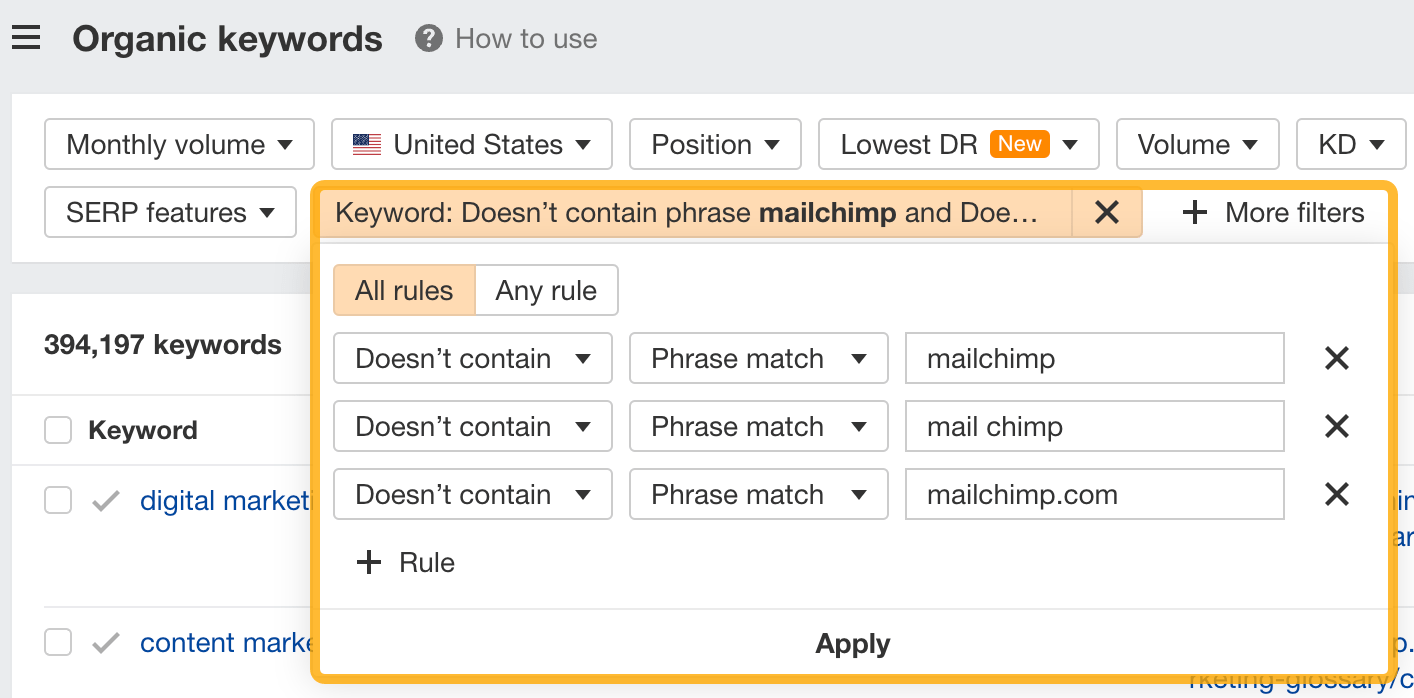

If you’re a new brand competing with one that’s established, you might also want to look for popular low-difficulty keywords. You can do this by setting the Volume filter to a minimum of 500 and the KD filter to a maximum of 10.


How to find keywords your competitor ranks for, but you don’t
- Go to Competitive Analysis
- Enter your domain in the This target doesn’t rank for section
- Enter your competitor’s domain in the But these competitors do section


Hit “Show keyword opportunities,” and you’ll see all the keywords your competitor ranks for, but you don’t.


You can also add a Volume and KD filter to find popular, low-difficulty keywords in this report.


How to find keywords multiple competitors rank for, but you don’t
- Go to Competitive Analysis
- Enter your domain in the This target doesn’t rank for section
- Enter the domains of multiple competitors in the But these competitors do section
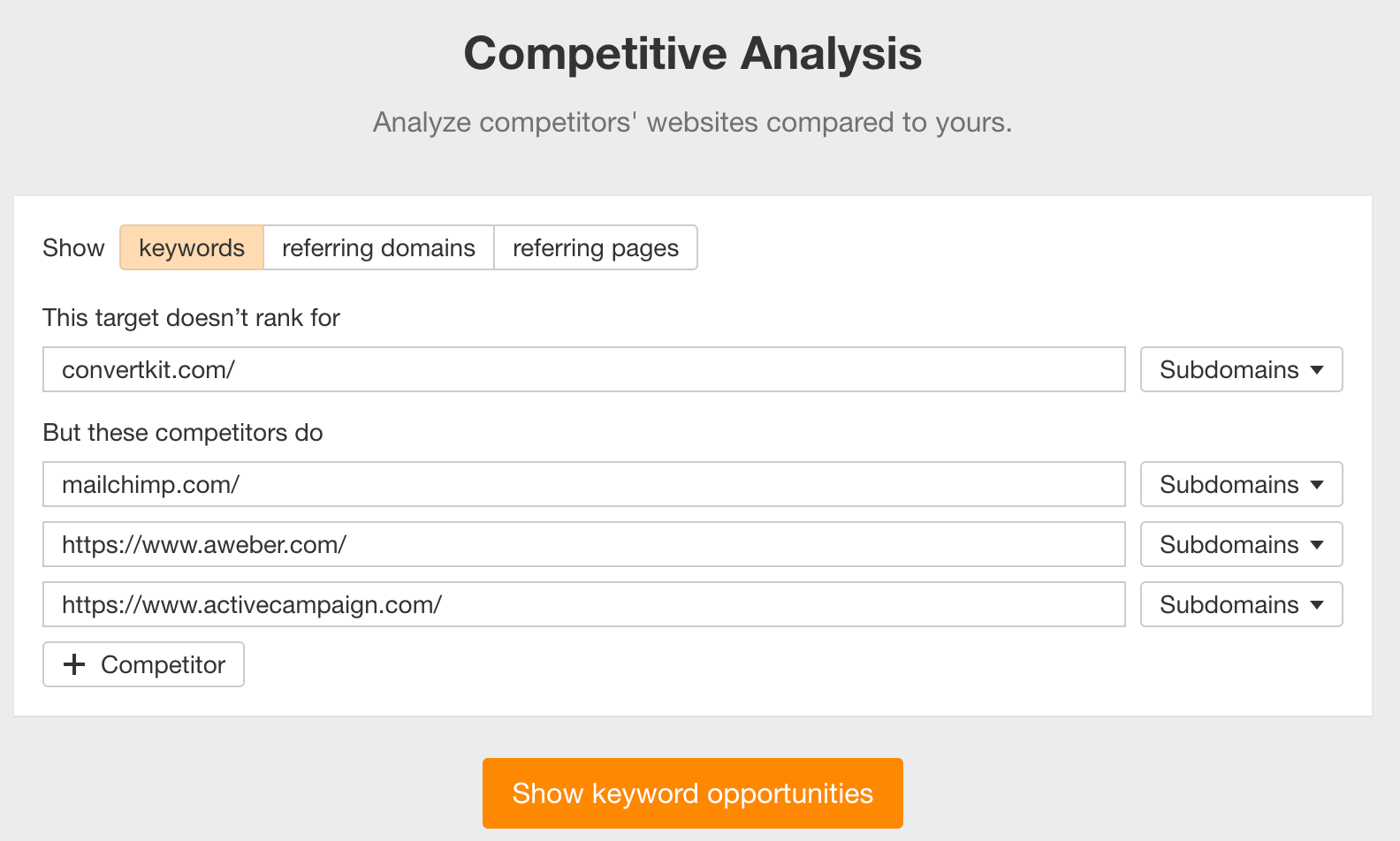

You’ll see all the keywords that at least one of these competitors ranks for, but you don’t.


You can also narrow the list down to keywords that all competitors rank for. Click on the Competitors’ positions filter and choose All 3 competitors:


- Go to Ahrefs’ Site Explorer
- Enter your competitor’s domain
- Go to the Paid keywords report
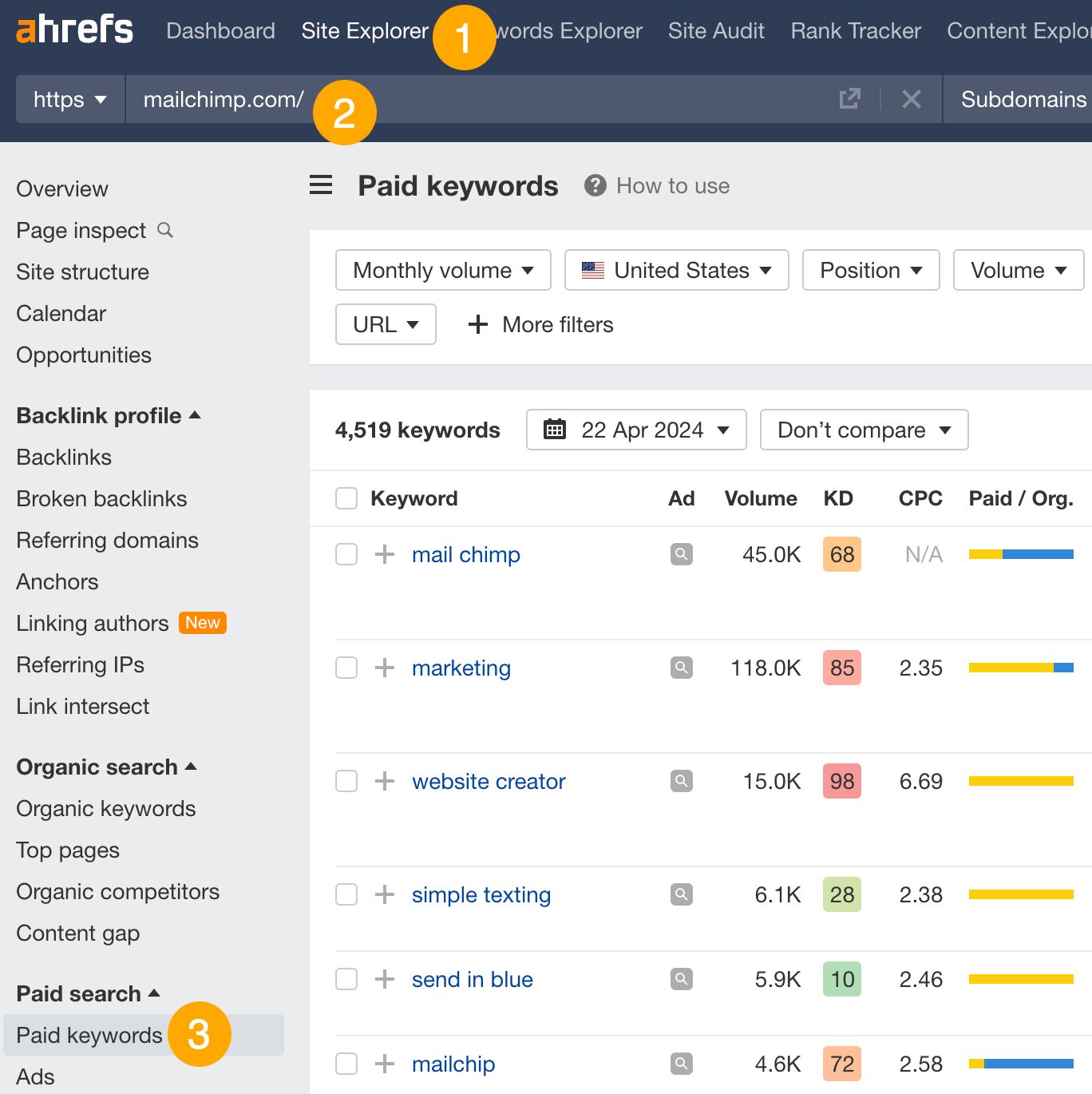

This report shows you the keywords your competitors are targeting via Google Ads.
Since your competitor is paying for traffic from these keywords, it may indicate that they’re profitable for them—and could be for you, too.
You know what keywords your competitors are ranking for or bidding on. But what do you do with them? There are basically three options.
1. Create pages to target these keywords
You can only rank for keywords if you have content about them. So, the most straightforward thing you can do for competitors’ keywords you want to rank for is to create pages to target them.
However, before you do this, it’s worth clustering your competitor’s keywords by Parent Topic. This will group keywords that mean the same or similar things so you can target them all with one page.
Here’s how to do that:
- Export your competitor’s keywords, either from the Organic Keywords or Content Gap report
- Paste them into Keywords Explorer
- Click the “Clusters by Parent Topic” tab


For example, MailChimp ranks for keywords like “what is digital marketing” and “digital marketing definition.” These and many others get clustered under the Parent Topic of “digital marketing” because people searching for them are all looking for the same thing: a definition of digital marketing. You only need to create one page to potentially rank for all these keywords.
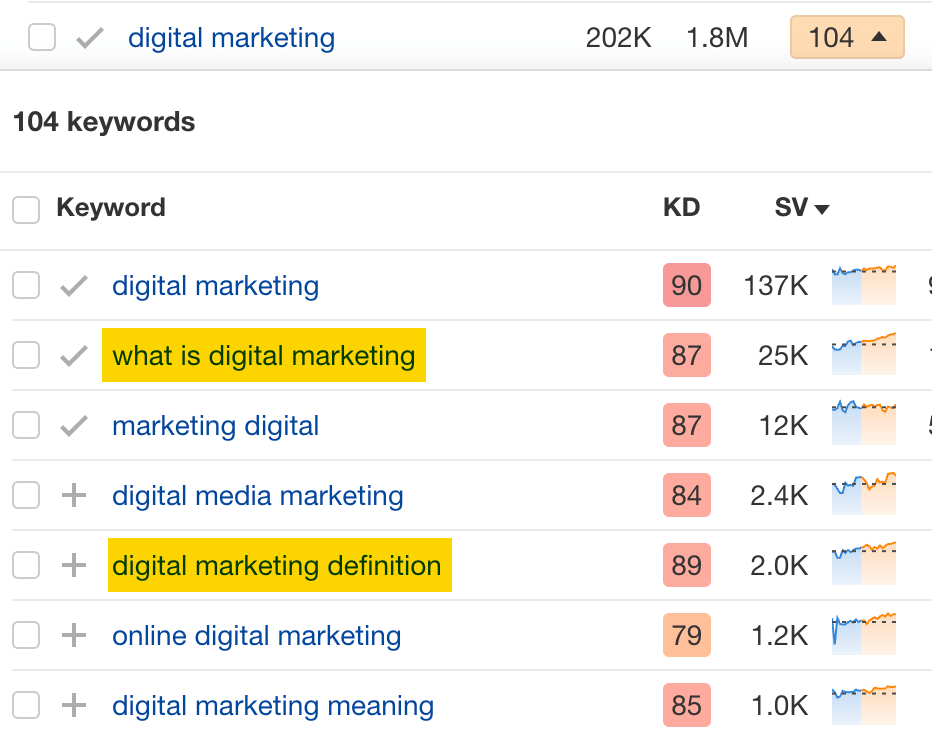

2. Optimize existing content by filling subtopics
You don’t always need to create new content to rank for competitors’ keywords. Sometimes, you can optimize the content you already have to rank for them.
How do you know which keywords you can do this for? Try this:
- Export your competitor’s keywords
- Paste them into Keywords Explorer
- Click the “Clusters by Parent Topic” tab
- Look for Parent Topics you already have content about
For example, if we analyze our competitor, we can see that seven keywords they rank for fall under the Parent Topic of “press release template.”


If we search our site, we see that we already have a page about this topic.


If we click the caret and check the keywords in the cluster, we see keywords like “press release example” and “press release format.”
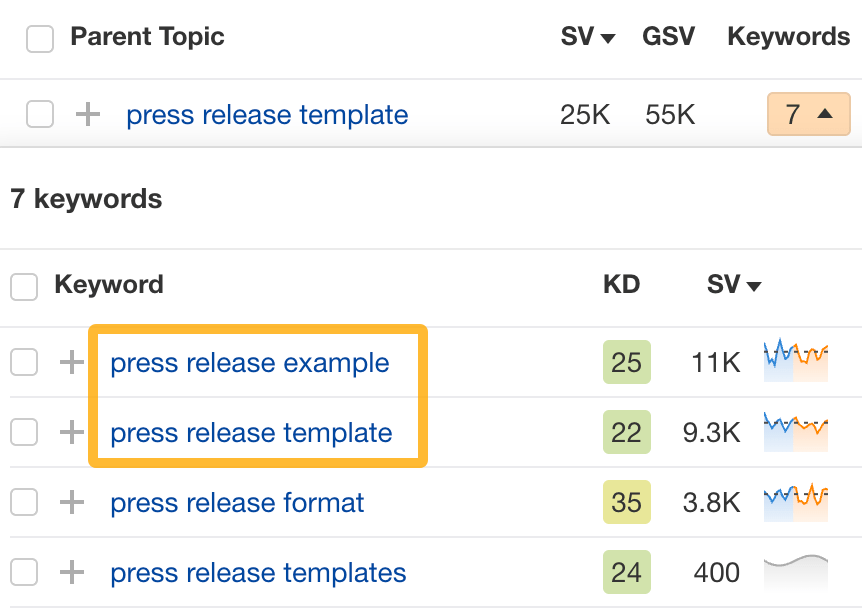

To rank for the keywords in the cluster, we can probably optimize the page we already have by adding sections about the subtopics of “press release examples” and “press release format.”
3. Target these keywords with Google Ads
Paid keywords are the simplest—look through the report and see if there are any relevant keywords you might want to target, too.
For example, Mailchimp is bidding for the keyword “how to create a newsletter.”


If you’re ConvertKit, you may also want to target this keyword since it’s relevant.
If you decide to target the same keyword via Google Ads, you can hover over the magnifying glass to see the ads your competitor is using.
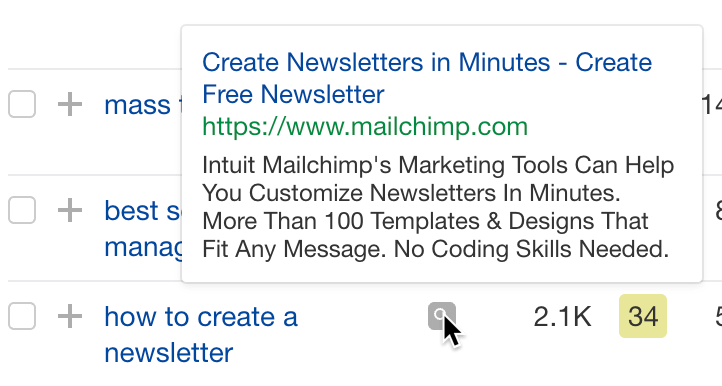

You can also see the landing page your competitor directs ad traffic to under the URL column.


Learn more
Check out more tutorials on how to do competitor keyword analysis:
SEO
Google Confirms Links Are Not That Important

Google’s Gary Illyes confirmed at a recent search marketing conference that Google needs very few links, adding to the growing body of evidence that publishers need to focus on other factors. Gary tweeted confirmation that he indeed say those words.
Background Of Links For Ranking
Links were discovered in the late 1990’s to be a good signal for search engines to use for validating how authoritative a website is and then Google discovered soon after that anchor text could be used to provide semantic signals about what a webpage was about.
One of the most important research papers was Authoritative Sources in a Hyperlinked Environment by Jon M. Kleinberg, published around 1998 (link to research paper at the end of the article). The main discovery of this research paper is that there is too many web pages and there was no objective way to filter search results for quality in order to rank web pages for a subjective idea of relevance.
The author of the research paper discovered that links could be used as an objective filter for authoritativeness.
Kleinberg wrote:
“To provide effective search methods under these conditions, one needs a way to filter, from among a huge collection of relevant pages, a small set of the most “authoritative” or ‘definitive’ ones.”
This is the most influential research paper on links because it kick-started more research on ways to use links beyond as an authority metric but as a subjective metric for relevance.
Objective is something factual. Subjective is something that’s closer to an opinion. The founders of Google discovered how to use the subjective opinions of the Internet as a relevance metric for what to rank in the search results.
What Larry Page and Sergey Brin discovered and shared in their research paper (The Anatomy of a Large-Scale Hypertextual Web Search Engine – link at end of this article) was that it was possible to harness the power of anchor text to determine the subjective opinion of relevance from actual humans. It was essentially crowdsourcing the opinions of millions of website expressed through the link structure between each webpage.
What Did Gary Illyes Say About Links In 2024?
At a recent search conference in Bulgaria, Google’s Gary Illyes made a comment about how Google doesn’t really need that many links and how Google has made links less important.
Patrick Stox tweeted about what he heard at the search conference:
” ‘We need very few links to rank pages… Over the years we’ve made links less important.’ @methode #serpconf2024″
Google’s Gary Illyes tweeted a confirmation of that statement:
“I shouldn’t have said that… I definitely shouldn’t have said that”
Why Links Matter Less
The initial state of anchor text when Google first used links for ranking purposes was absolutely non-spammy, which is why it was so useful. Hyperlinks were primarily used as a way to send traffic from one website to another website.
But by 2004 or 2005 Google was using statistical analysis to detect manipulated links, then around 2004 “powered-by” links in website footers stopped passing anchor text value, and by 2006 links close to the words “advertising” stopped passing link value, links from directories stopped passing ranking value and by 2012 Google deployed a massive link algorithm called Penguin that destroyed the rankings of likely millions of websites, many of which were using guest posting.
The link signal eventually became so bad that Google decided in 2019 to selectively use nofollow links for ranking purposes. Google’s Gary Illyes confirmed that the change to nofollow was made because of the link signal.
Google Explicitly Confirms That Links Matter Less
In 2023 Google’s Gary Illyes shared at a PubCon Austin that links were not even in the top 3 of ranking factors. Then in March 2024, coinciding with the March 2024 Core Algorithm Update, Google updated their spam policies documentation to downplay the importance of links for ranking purposes.
The documentation previously said:
“Google uses links as an important factor in determining the relevancy of web pages.”
The update to the documentation that mentioned links was updated to remove the word important.
Links are not just listed as just another factor:
“Google uses links as a factor in determining the relevancy of web pages.”
At the beginning of April Google’s John Mueller advised that there are more useful SEO activities to engage on than links.
Mueller explained:
“There are more important things for websites nowadays, and over-focusing on links will often result in you wasting your time doing things that don’t make your website better overall”
Finally, Gary Illyes explicitly said that Google needs very few links to rank webpages and confirmed it.
I shouldn’t have said that… I definitely shouldn’t have said that
— Gary 鯨理/경리 Illyes (so official, trust me) (@methode) April 19, 2024
Why Google Doesn’t Need Links
The reason why Google doesn’t need many links is likely because of the extent of AI and natural language undertanding that Google uses in their algorithms. Google must be highly confident in its algorithm to be able to explicitly say that they don’t need it.
Way back when Google implemented the nofollow into the algorithm there were many link builders who sold comment spam links who continued to lie that comment spam still worked. As someone who started link building at the very beginning of modern SEO (I was the moderator of the link building forum at the #1 SEO forum of that time), I can say with confidence that links have stopped playing much of a role in rankings beginning several years ago, which is why I stopped about five or six years ago.
Read the research papers
Authoritative Sources in a Hyperlinked Environment – Jon M. Kleinberg (PDF)
The Anatomy of a Large-Scale Hypertextual Web Search Engine
Featured Image by Shutterstock/RYO Alexandre
-

 PPC4 days ago
PPC4 days ago19 Best SEO Tools in 2024 (For Every Use Case)
-
SEARCHENGINES7 days ago
Daily Search Forum Recap: April 16, 2024
-

 SEO7 days ago
SEO7 days agoGoogle Clarifies Vacation Rental Structured Data
-

 MARKETING6 days ago
MARKETING6 days agoStreamlining Processes for Increased Efficiency and Results
-
SEARCHENGINES6 days ago
Daily Search Forum Recap: April 17, 2024
-

 SEO6 days ago
SEO6 days agoAn In-Depth Guide And Best Practices For Mobile SEO
-

 PPC6 days ago
PPC6 days ago97 Marvelous May Content Ideas for Blog Posts, Videos, & More
-

 MARKETING5 days ago
MARKETING5 days agoEcommerce evolution: Blurring the lines between B2B and B2C













